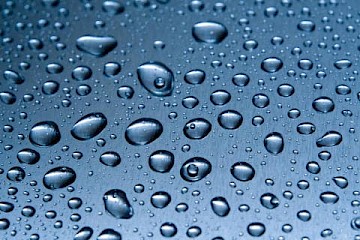Lubricant Water Handling Ability: Why It Matters
 No matter the product being manufactured, I would say most facilities have some sort of water being introduced during the process. Some of the uses for water in the manufacturing processes include washing, diluting, transporting, cooling, etc. Knowing that these processes involve water, we often recommend that the lubricant purchaser considers a lubricant’s ability to handle or resist water; what follows are a few reasons why.
No matter the product being manufactured, I would say most facilities have some sort of water being introduced during the process. Some of the uses for water in the manufacturing processes include washing, diluting, transporting, cooling, etc. Knowing that these processes involve water, we often recommend that the lubricant purchaser considers a lubricant’s ability to handle or resist water; what follows are a few reasons why.
Effects of Water Contamination in a Lubricant
Rust and Corrosion - Water induces oxidation which produces rust when in contact with iron and steel surfaces for extended amounts of time. Rust can cause abrasive wear, which is when a hard, rough surface slides across a softer surface. Once an oil starts to oxidize, you may see an increase in the acid number as well.
Hydrogen Embrittlement - This is when water finds its way into the microscopic cracks in the metal surfaces of the component. When water is introduced to excessive pressure, it will actually decompose into its components, and the hydrogen will be released. This can force those microscopic cracks to open wider, making them larger and thus more dangerous to the machine.
Cavitation - Vaporous cavitation is when the vapour pressure of water is met in a low-pressure area of the machine, which induces expansion of the vapour bubbles. Eventually, this expansion will cause the vapour bubbles to implode and condense back to the liquid state. When this occurs, it causes a sort of micro-jet that causes surface fatigue and erosion.
Lubricant Degradation - Water not only accelerates the oxidation of metal surfaces but also of the oil by depleting oxidation inhibitors and demulsifiers within the lubricant. When oxidation occurs, the acid formation can occur soon after. There is also the obvious change in viscosity which is the most important factor of any lubricating oil. Add water to any other fluid, and the viscosity will decrease when hydrolyzed; conversely, if the water is emulsified into the oil, it can produce sludge, which will actually increase the viscosity.
Decreased Load Carrying Capacity - In the presence of water, the film strength of the oil becomes impaired. The pressure-viscosity coefficient is disrupted, which means the lubricant's ability to solidify or increase viscosity in relation to load is impaired, and the appropriate lubricating film may not be produced. Water is extremely detrimental to this process within the lubricant.
Important Properties for Lubricant Selection in the Presence of Water
Base Oil - As previously mentioned, hydrolysis is the degradation of the base oil’s molecules due to water. Hydrophilic polyglycols and some esters readily absorb water without any mechanical action needed. However, others like minerals, polyalphaolefins, silicone and PFAE require mechanical action by the lubricated part to cause water absorption and the formation of a water-oil emulsion. Be sure to take this into account when selecting a water-resistant lubricant.
Demulsibility - When selecting a lubricant that needs to be highly resistant to water, one property that needs to be taken into account is demulsibility. Demulsibility is a lubricant’s ability to release water. Most of the paper mills, food-processing facilities and steel mill operations that I have encountered in the field often incorporate a lot of water into their processes. Most of our recommendations to these types of facilities are centred around water resistance and demulsibility.
Thickeners (Grease) - Grease is normally chosen where adhesion properties are required. But, if grease absorbs water, it becomes softer, loses adhesion, and washes out of the lubricated part. In greases, there are certain types of thickeners that allow for better water resistance. It is commonly known among industry specialists that aluminium and sulfonate greases are particularly water-resistant.
Hydrolytic Stability - Hydrolytic stability is the resistance of a cured polymer material to reverting to a semisolid or liquid form when exposed to high humidity and temperatures. Generally, a lubricant will perform better in wet/humid or high-temperature environments when it has good hydrolytic stability.
Although I have pointed out a few ways to assist in lubricant selection in the presence of water, I would like to conclude by saying that the main factor in any of this is preventing water contamination and keeping all other types of contamination to an absolute minimum. Fitting leaks are high on the list of reasons why water ingression exists in a machine. This is why we advise against the use of Teflon tape and instead recommend using a thread sealant like PLS 2 to prevent micro leaks. Lastly, when preventing contaminant ingression, we highly recommend modifying machinery with preventative measures such as desiccant breathers and quick connects.
